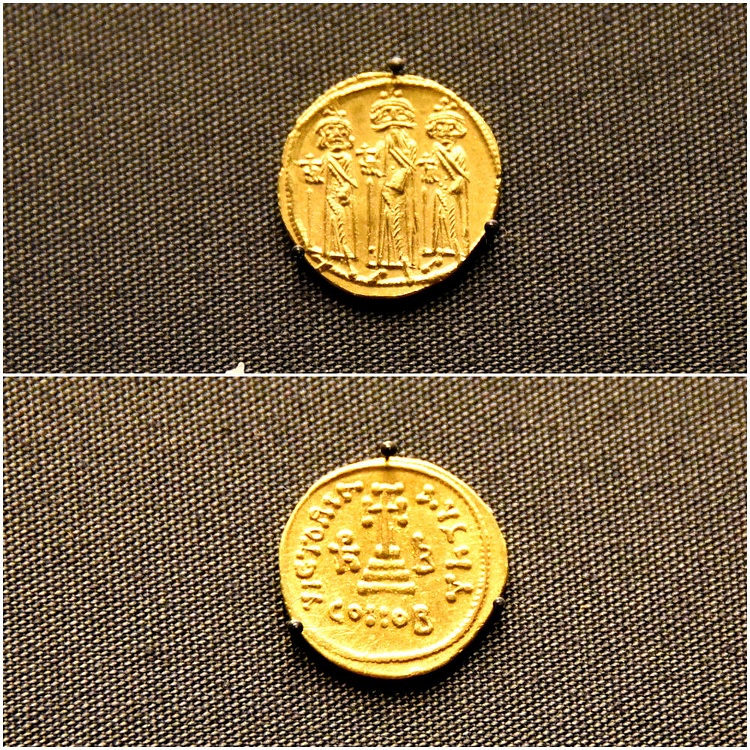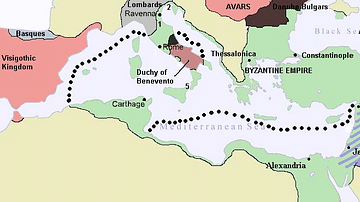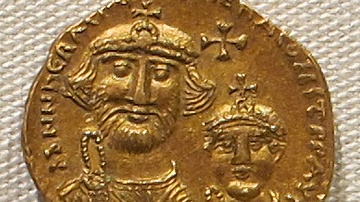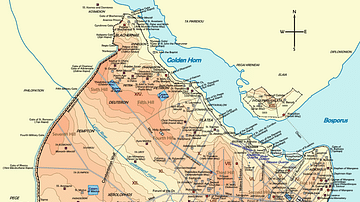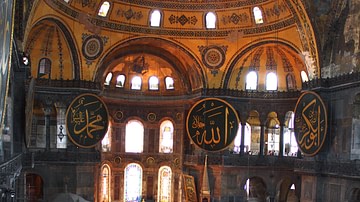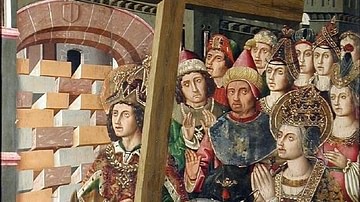Illustration
Byzantine coins often show Christian symbols and an image of the Emperor. Here, Emperor Heraclius and his sons wear crowns and crosses. A cross also appear on the back. Gold solidus coins, minted in Constantinople, issued by the Byzantine Emperor Heraclius, circa 610-641 CE (upper image) and 629-641 CE (lower image). From Constantinople, modern-day Istanbul, Turkey. (The British Museum, London).
Cite This Work
APA Style
Amin, O. S. M. (2016, October 20). Byzantine coins of Heraclius. World History Encyclopedia. Retrieved from https://www.worldhistory.org/image/5959/byzantine-coins-of-heraclius/
Chicago Style
Amin, Osama Shukir Muhammed. "Byzantine coins of Heraclius." World History Encyclopedia. Last modified October 20, 2016. https://www.worldhistory.org/image/5959/byzantine-coins-of-heraclius/.
MLA Style
Amin, Osama Shukir Muhammed. "Byzantine coins of Heraclius." World History Encyclopedia. World History Encyclopedia, 20 Oct 2016. Web. 19 Apr 2024.
